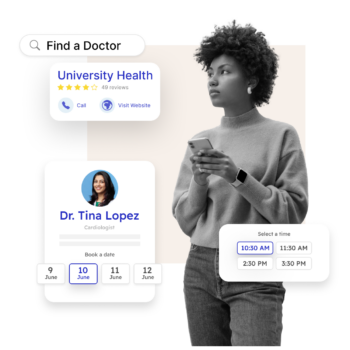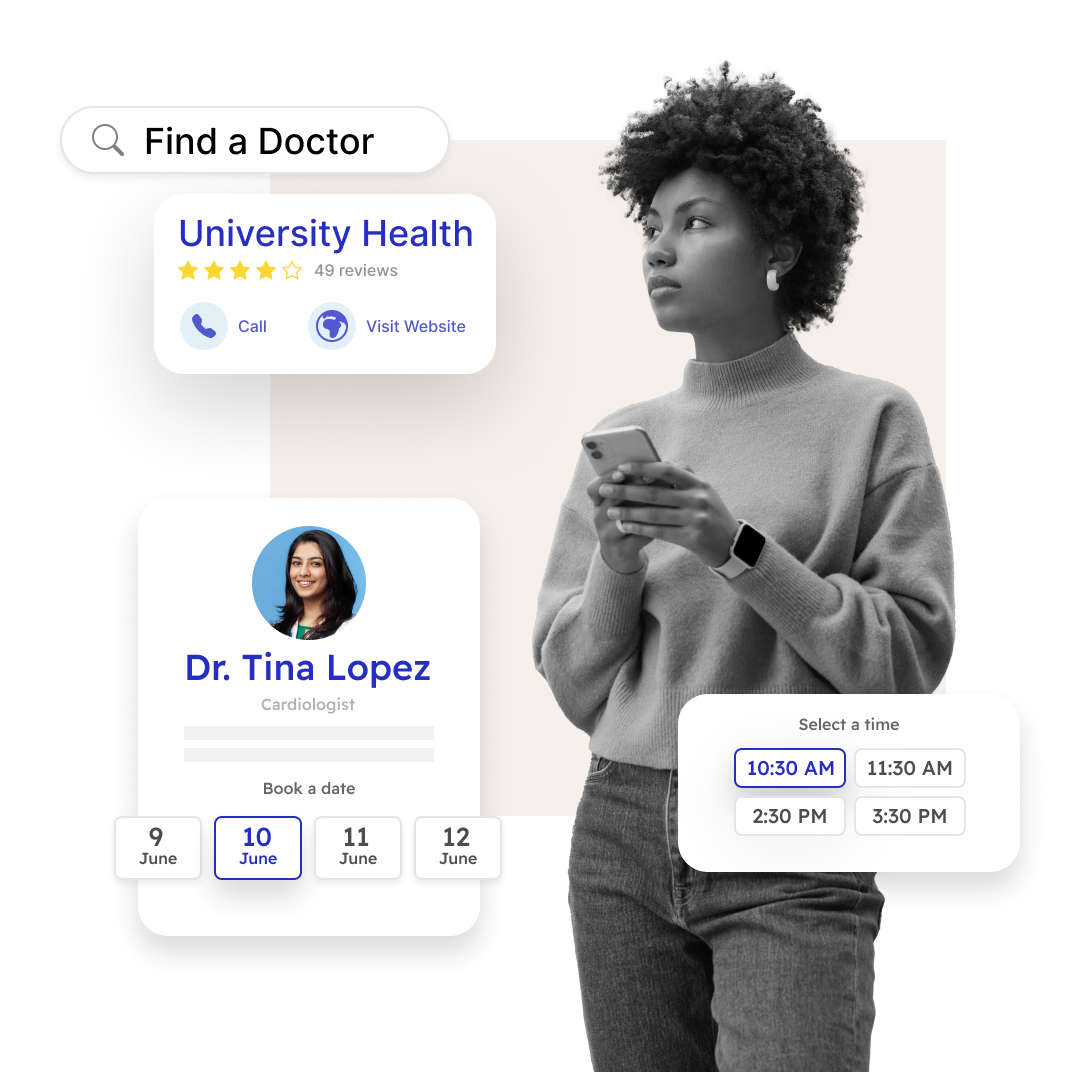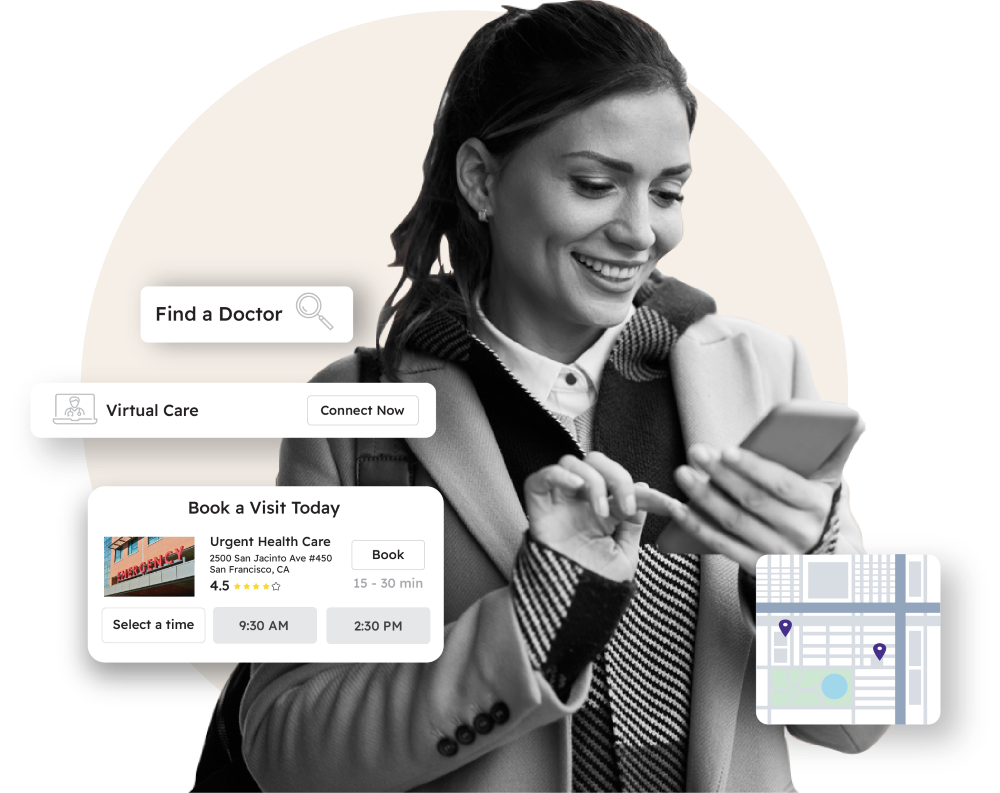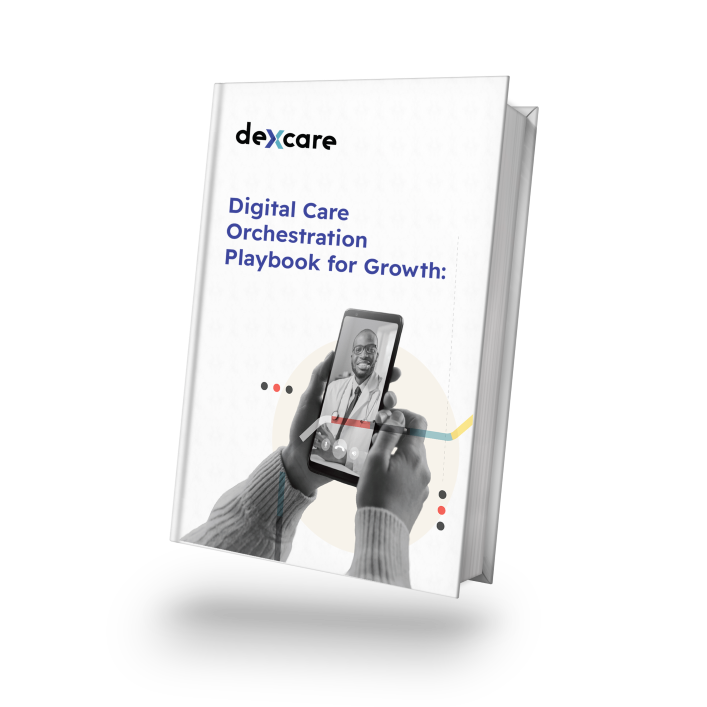Smart Patient Routing: The Most Effective Way to Reduce ED Overcrowding

Health system emergency departments (EDs) across the U.S. are feeling the pressure of overcrowding.
More than 155 million ED visits were reported in 2024, with volumes expected to climb by 5% over the next decade. These patients aren’t choosing the ED because they want to. They’re choosing it because they feel they have no other option.
This is a routing problem and a capacity issue. But what if health systems could intercept these patients before they ever reach the ED?
Smart patient routing technology can identify lower-acuity patients as they begin searching for care and guide them to the most appropriate setting — virtual care, urgent care, or primary care — before they ever set foot in an emergency department.
The hidden costs of misrouted patients
When patients end up in the wrong care setting, everyone— health systems, clinicians, and even patients themselves — pays the price.
On a system level, EDs become clogged with cases that could be resolved more efficiently and cost effectively elsewhere, delaying care for the most critically ill patients. Simultaneously, clinicians trained in emergency medicine spend valuable time on cases that nurse practitioners or physician assistants could handle in urgent care or virtual settings.
Patients suffer, too, by having to wait longer to receive the care they need. Research analyzing over 3,000 emergency department patients found that prolonged wait times creates less satisfied patients.
Once someone arrives at the ED, the damage is already done — resources are committed, wait times increase, and costs mount.
The solution: Engaging patients the moment they search for care
The most effective way to reduce emergency room overcrowding isn’t to build more EDs or hire more staff. It’s to divert misaligned visits right from the start.
Smart patient routing addresses the problem at its source by identifying low-acuity cases during the initial search for care and directing them to virtual care, urgent care, or primary care appointments where patients will receive faster, more cost-effective treatment.
Rather than waiting for patients to arrive at overwhelmed emergency departments, improving patient routing creates a frictionless digital experience that balances supply and demand across all care settings.
DexCare makes this possible by meeting patients where they begin their healthcare journey: at the moment of search. With DexCare, patients can search for care using everyday language like “my child has a fever” or “I think I sprained my ankle.” The platform understands their intent and presents best-fit care options based on their symptoms, location, and real-time availability. Patients see virtual care appointments available in minutes, urgent care slots at nearby locations, or primary care options that match their needs.
The platform also enables real-time routing to appropriate care settings. If a patient’s preferred urgent care location is at capacity, the system automatically displays alternatives across the health system’s network. Cross-location resource sharing (especially during demand spikes) helps health systems achieve capacity optimization while ensuring that patients always see available options rather than hitting scheduling dead ends.
The business case for smart patient routing
Smart patient routing creates benefits that extend far beyond reducing ED wait times. When health systems optimize capacity by directing patients to the most appropriate care settings, they open up new opportunities for growth.
Improving virtual care utilization through intelligent patient routing breaks down geographic barriers so health systems can capture patients from new ZIP codes. It also generates downstream revenue when those patients go on to use other network services.
Better patient routing also creates a cascading effect throughout the organization. EDs can focus on true emergencies, primary care practices gain capacity, and brick-and-mortar urgent care centers handle cases that genuinely require in-person evaluation.
During high-volume events like seasonal flu surges, smart routing helps reduce costs and ease system-wide burdens by automatically directing patients to available virtual and urgent care slots rather than overwhelming EDs.
Proven results: Kaiser Permanente
Kaiser Permanente, a national integrated health network, sought to reduce ED overcrowding by opening up 24/7 Virtual On-Demand care to its members across all 50 states. To do so, it chose DexCare.
Just six months after enabling after-hours virtual care nationwide, Kaiser saved $18 million in ED diversion. Today, the network has reclaimed nearly 350,000 ED hours a year while seeing 40,000 patients after-hours virtually thanks to DexCare’s cross-market coverage.
DexCare also helped Kaiser balance its resources. Kaiser staffs its virtual care with nurses, primary care physicians, and emergency medicine doctors. Nurses can see the reason for visit in the queue and select patients with low-acuity conditions they can assist. The results:
- Increased patient satisfaction thanks to shorter wait times
- Increased nurse satisfaction since they operate at the top of their license
- Increased physician satisfaction since they focus on patient cases that reflect their specialty training
Managing high-volume events and seasonal surges
Community Health Network (CHNw) in Indiana demonstrates how the combination of smart patient routing and virtual on-demand care can handle seasonal capacity challenges — such as flu season — more efficiently than traditional models. During the peak of flu season, the network’s virtual care platform, powered by DexCare, absorbed a 52% increase in patient volume with only a 10% rise in labor costs.
DexCare also helps CHNw thrive balance its clinical resources during peak periods by automatically directing patients to virtual slots when physical locations reach capacity. This feature lets patients receive the care they need within minutes instead of waiting hours in a crowded in-person urgent care center or ED.
Reducing ED burden through care orchestration
The path to reducing emergency room overcrowding starts at the moment patients search for care. DexCare’s care orchestration platform guides appropriate patients to virtual and urgent care alternatives, reducing ED burden while delivering faster, more convenient treatment and significantly better experiences for patients who don’t need emergency-level resources.
But don’t just take our word for it. Learn what other health systems say about DexCare in this KLAS Spotlight Report.






